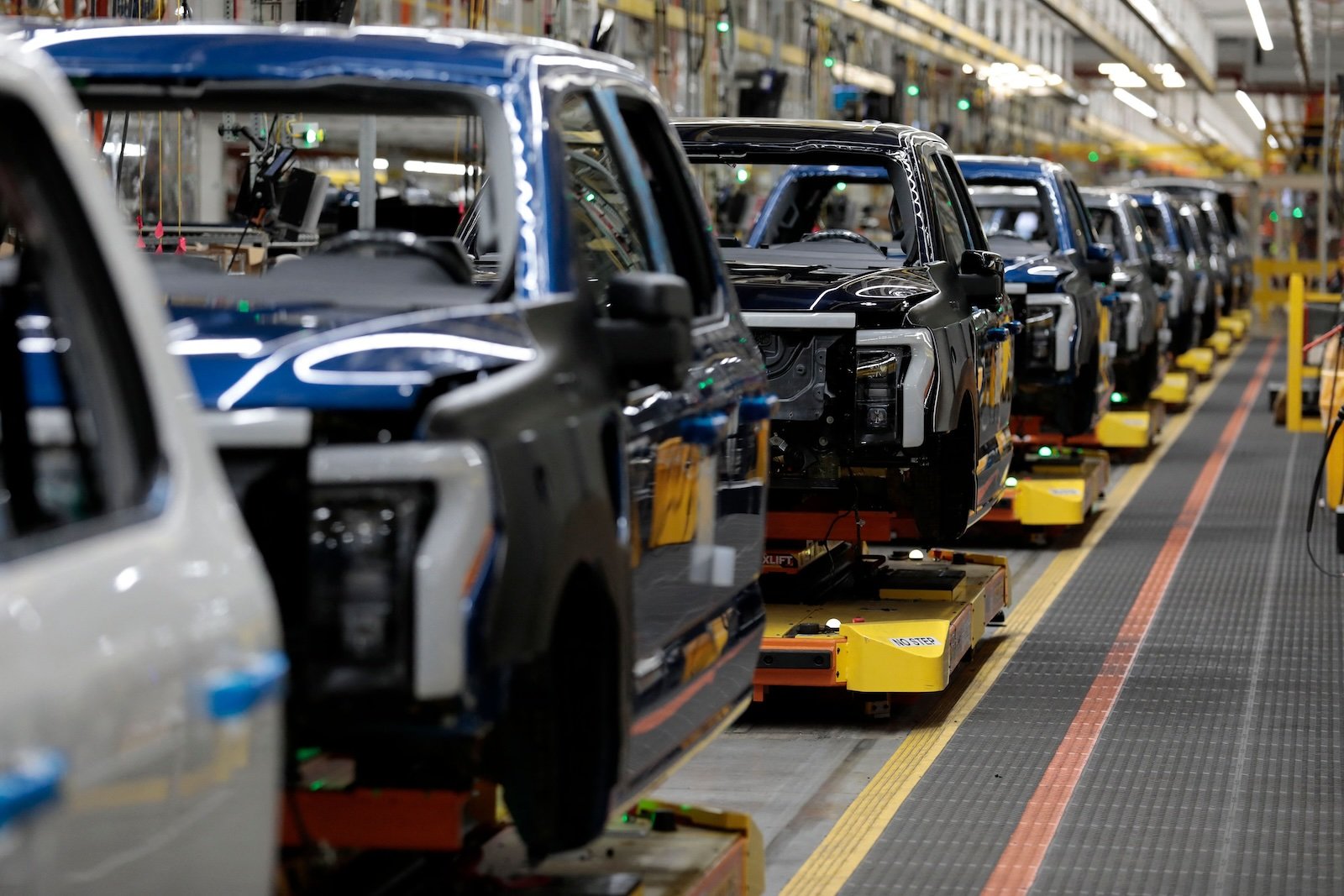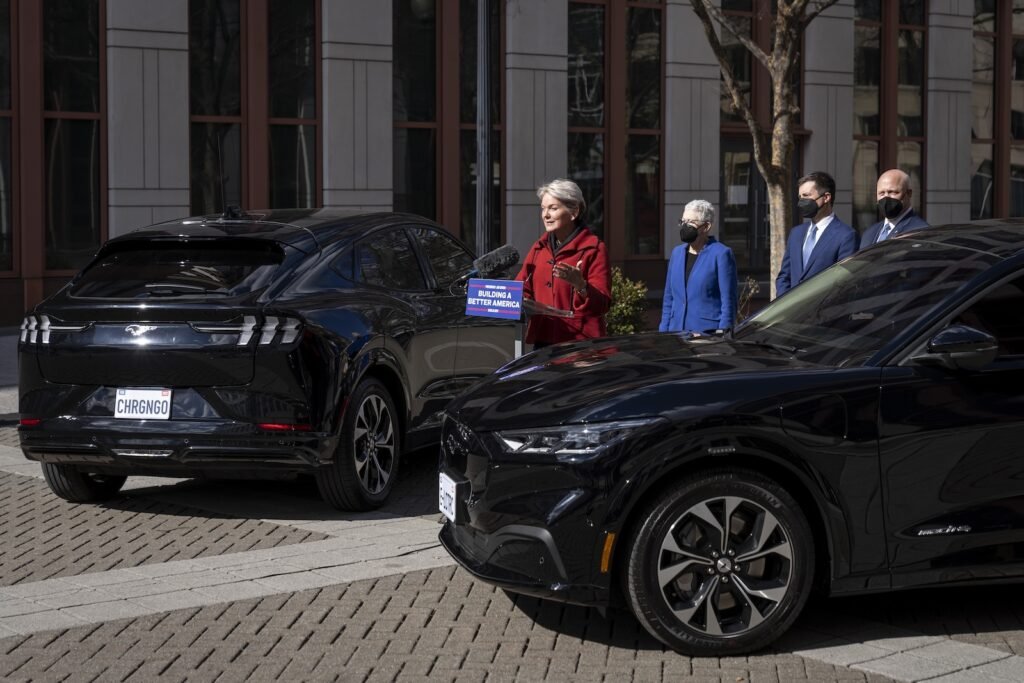Along with apple pie, baseball, and tipping, the automobile is classically American. But when it comes to the 21st century passenger car, automakers in the United States — save for Tesla — have been playing catchup, scrambling to counter the rise of China’s electric vehicle boom. Sure, both EVs and internal combustion cars have seats and four wheels, but it’s not so simple as American automakers swapping in a few parts and calling it a day.
So on Thursday, the Department of Energy announced $1.7 billion to fund the conversion of 11 auto manufacturing facilities, which had either been shut down or were at risk of shutting down, to make EVs and supplies for the burgeoning industry. Those facilities will be spread across eight states — Georgia, Indiana, Illinois, Maryland, Michigan, Ohio, Pennsylvania, and Virginia — which the DOE says will create 2,900 new jobs and ensure that more than 15,000 union workers keep theirs. General Motors will get $500 million for one of its plants in Lansing, Michigan, and Fiat Chrysler nearly $600 million total for two of its facilities.
Soon after the announcement, Grist sat down with Secretary of Energy Jennifer Granholm to talk about why domestic EV manufacturing is so important, how those EVs could actually help the grid instead of destroying it, and why even children will benefit from the $1.7 billion even though they can’t drive.
The conversation has been condensed and edited for clarity.

Q. Why is the Biden administration providing this funding? Why is it important to the DOE that electric vehicles are made domestically?
A. The funding comes through the Inflation Reduction Act, but the intent behind that, of course, is to make sure that America is reshoring manufacturing, particularly in the clean energy space, and here in the electric vehicle space. We’re competing globally, obviously with China. And we want to make these products here. We want to make them with union workers, and we want to make them in places that have been bruised by globalization. That’s where this particular round of funding really centers — communities that have built automobiles for the past 100 years, and that should be building them for the next 100 years.
Q. Some of this money is going toward electric buses. Why is it critical to get more of those on the road?
A. Diesel particulates are not healthy for kids — increased asthma, other very serious health impacts. So having an electric bus, which is quiet and clean and healthy, is wonderful for kids. It’s wonderful for fighting climate change. It’s wonderful for communities, and now it is also wonderful for job creation.
Q. How is the Biden administration trying to boost the demand for EVs?
A. We’re seeing an increase in demand. On top of that, the administration is working on making sure that that demand continues. So how do you do that? By reducing the price. That means those tax credits at the dealership, that are now being used everywhere, brings down the price of an electric vehicle to either be on par and, in many cases, cheaper than an internal combustion engine.
We want to make sure that there’s the infrastructure so that people don’t have range anxiety, and that’s what the Bipartisan Infrastructure Law’s charging funding for states is doing, to fill in the gap where the private sector hasn’t been installing chargers. So on transportation corridors every 50 miles, we want to see a high-speed charger, and we want it to be not more than a mile off the transportation corridor and [be] app-enabled. Since the president has taken office, the number of publicly available chargers has doubled. The goal is to get to 500,000 of them by 2030. We’re well on track to do that.
Q. People have also been worrying that if we are deploying more EVs, the grid simply won’t be able to handle that additional load. Do you have a response to that?
A. The president has a goal of getting to 100 percent clean electricity by 2035, so we’ve got to continue to deploy, deploy, deploy all these clean energy assets — solar utility-scale, wind, distributed solar, other types of clean energy, like hydroelectric power or geothermal power, or small modular [nuclear] reactors. We will have enough generation capacity for the electrification of transportation.
Q. And with the development of vehicle-to-grid technology, grid operators would actually be able to tap into EVs as a vast network of batteries. In that case, EVs can actually be an asset on the grid, not a liability.
A. One hundred percent. The virtual power plants that are created — by making sure the distributed energy resources like electric vehicle batteries are part of the mix — means that we can add between 20 and 100 gigawatts just from virtual power plants like electric vehicles, or a bunch of electric vehicles connected together. So yes, that is absolutely part of the plan, and part of the funding that DOE does is to encourage those types of pilot projects, to ensure that they can be worked out and then taken to scale.
Q. A few of these facilities that would receive funding are in swing states, and we’ve got an election coming up. I was curious how they were chosen and why now, just before the election? Or is this a matter of: You’re looking more at the facilities that could be converted and less so the state itself.
A. This does not involve the election. It involves a merit process that is selected by professionals and career staff within the Department of Energy who evaluate all these objective factors about where we could make sure that we repurpose these internal combustion engine plants that were closing in this particular case. A lot of these went to historical automaking communities, because that’s what this was geared toward. This was all part of the Inflation Reduction Act, and so that law compels us to continue to award grants, whether we’re in an election year or out of an election year.
Q. Republicans have been making an effort to slow EV adoption. Could they target this sort of funding? And if there’s another Trump administration, would they also be able to reverse any of this?
A. Bottom line is, once these announcements are made and steel is in the ground and people start being hired, which is what’s happening now, it would be political malpractice for any leader of that state or that political party to go in the opposite direction of where their constituents would like to see them go. I mean, people are being hired. It’s a really good thing across the country. So I’m hopeful that any future administration would see the value and the importance of keeping this industrial strategy in place.

